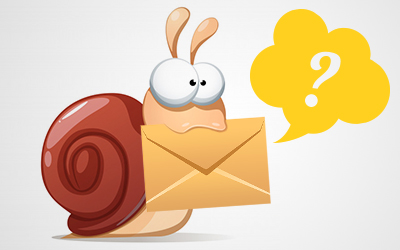
Communication is key to maintaining cohabitation on the planet Earth, regardless if it’s between two animals, humans or an entire eco-system. It enables everyone involved to send and receive signals, at the same time improving it in order to reach a higher rate of understanding. But while this manner of natural communication has found a way to perfect the process of getting the message across, inter-human communication seems to be going for the exact opposite.
In the modern, tech era, people seem to be in a constant rush for an invisible objective, which has caused them to seek ways to shorten the time needed for otherwise leisure activities. Hence, they read a short book review instead of the publication itself, or they proof their project while eating dinner. Better yet, they attempt to squeeze in as much meaning as they can into short text messages or even instant online texts for reasons ranging from time-saving purposes to conversation avoidance. What was once an enjoyable and often times profound practice of writing to your significant others in order to convey your message, has now turned into a dry obligation.
Snail Mail throughout the Years
Snail mail is the modern term for the regular Post Office service everyone once knew and loved. It was once considered the gift to human kind, as people across the globe became suddenly able to communicate to long-lost friends and relatives, or discover new ways of life. Some might even say it was the first driver towards globalization, although it differed due to boasting the personal dimension that faded in latter instances.
Since the early days of the regular Post Office, there have been several events that anticipated its current state. Dating back a few centuries ago, when literacy and money were both contained among the few wealthy individuals, letter writing was nothing short of magical. Once literacy spread to the lower classes, and all the way to the brute masses in order to improve overall quality of life, the aristocracy practically predicted the first of the Snail Mail downfalls. This opinion was further strengthened during the Victorian Era which introduced the penny post – making postal services all the more widely accessible and affordable. Due to its crucial role in everyday life, it became the ultimate messenger of the trend of the times – innovation to improve.
Another downfall of the Snail Mail was predicted about a century afterward, when Margaret Thatcher gave the first indications towards the privatization of the Postal service. The fear back in the days of the 1980s was that its structure would no longer be sustainable enough, as fees were low and expenses were rather high, both in human labour and transportation.
Nevertheless, nothing hit the Post Office as hard as the age of technology. With the invention of the computer, the World Wide Web and the benefits that go along with it, Post Office services became all but redundant to a progressive society. Naturally, many side-factors were identified as an additional boost into the ensuing stagnation. The US nation recognized one such factor among the members of Congress, which are claimed to be the real culprits behind the lessening of the institution’s sustainability. Many other factors were soon bashed for destroying this centuries-old tradition and drew people’s efforts in the wrong direction.
How does Snail Mail succeed in a Digital World?
Success in today’s modern society filled with competitiveness is a rather far-fetched prospect, often reserved for the novelties of the world. And in spite of that, the ancient Post Office has managed to snatch its piece of the success pie, leaving all others to wonder how?
The benefits of snail mail are the main reason behind the institution’s success. Some tend to recognize the benefit in its simplicity – there are no special procedures or a need to know advanced computer system engineering in order to hold, read, transport or ultimately store a piece of paper. In the words of a concerned reader of The Atlantic, “Import/Export can be significantly faster than Internet transfer and more cost effective than upgrading your connectivity. Email is much faster than snail mail when you send a few bytes of data. But snail mail wins every day except Sunday (and soon Saturday) when you want to send Terabytes. “
Another point of view regarding the Post’s ability to doge demise is made regarding its efficiency, and ultimate flexibility. Namely, once e-commerce services became a thing of the present, the Postal Service managed to incorporate it in the delivery gaps of the masses that resorted to free and instant communication services. Thus, the Post became the much needed medium to ordering and receiving items from online stores.
Ultimately, it was the inherent nature of the regular letter that managed to bring it the most success. In today’s hectic way of life, there are those who urge others to appreciate each other, and what better way to do it than through a letter. Simon Garfield, British author on several such topics that reinvent the old practices of cartography and typography, has also published a book on the letter, and the art of writing it. He makes a point out of the long-lasting value of the letter:
“Have you ever discovered love e-mails in your attic? And will we in the future? Personally I never feel comfortable about committing intimate details to pixels. It doesn't feel right, and, after the (Edward) Snowden revelations, you never know who'll be reading them. And of course the delight in receiving a handwritten love letter is unmatched by any form of electronic message. It's all about humanity and physicality.”
As a human that still has great reverence for the invention of the email and the many practical purposes it conveys, Simon Garfield has been able to accurately describe what the letter contains = humanity and physicality. The immediacy of the written word is here to stay, and the Post Office is bound to benefit from it, one way or another.
Concluding Thoughts
All in all, there are still many ways to make the Post applicable in everyday life. When everything from books and birthday cards is turning to digital bits and pieces of code, PDF files and social media, it is the Post Office that will provide the recluse from the tech monsters. Considering the fact that efforts have been made to automate the process of mail delivery through a gadget, without depriving it of its previously mentioned qualities, there is no doubt that snail mail is a long way from fading away.
Sources:
- ‘Where 'Snail Mail' Beats the Electronic Alternatives’, James Fallows
- ‘The One Article You Need to Read About the Postal Service’, James Fallows
- ‘Why the Postal Service Is Going Out of Business’, Adam Hartung
- ‘How can the Post Office keep pace with the modern world?’, Chris Bowlby
- ‘Can letters via snail mail survive in a digital age?’, Bob Minzesheimer
- ‘Postifier brings snail mail into the digital age’, Will Shanklin



